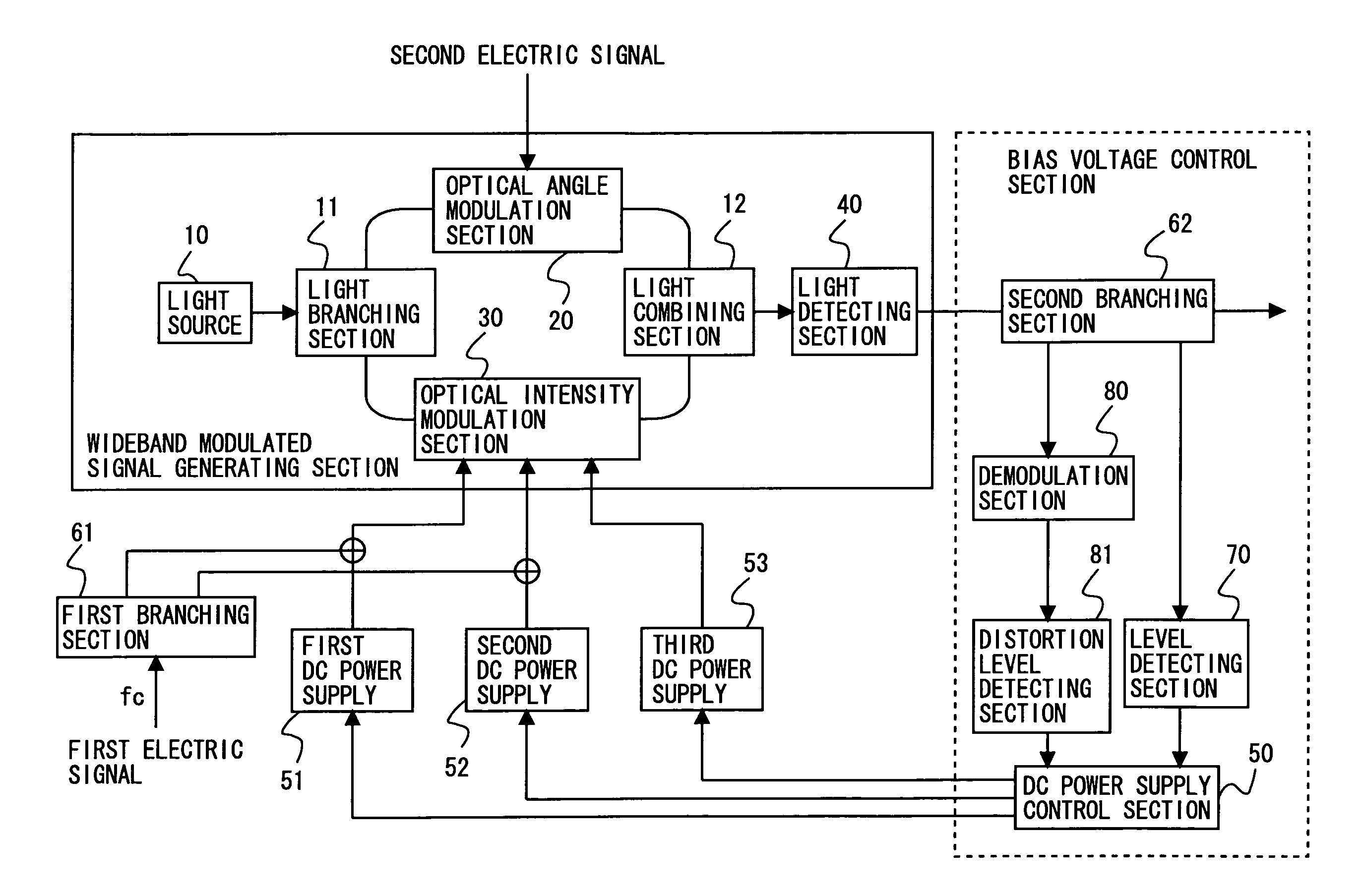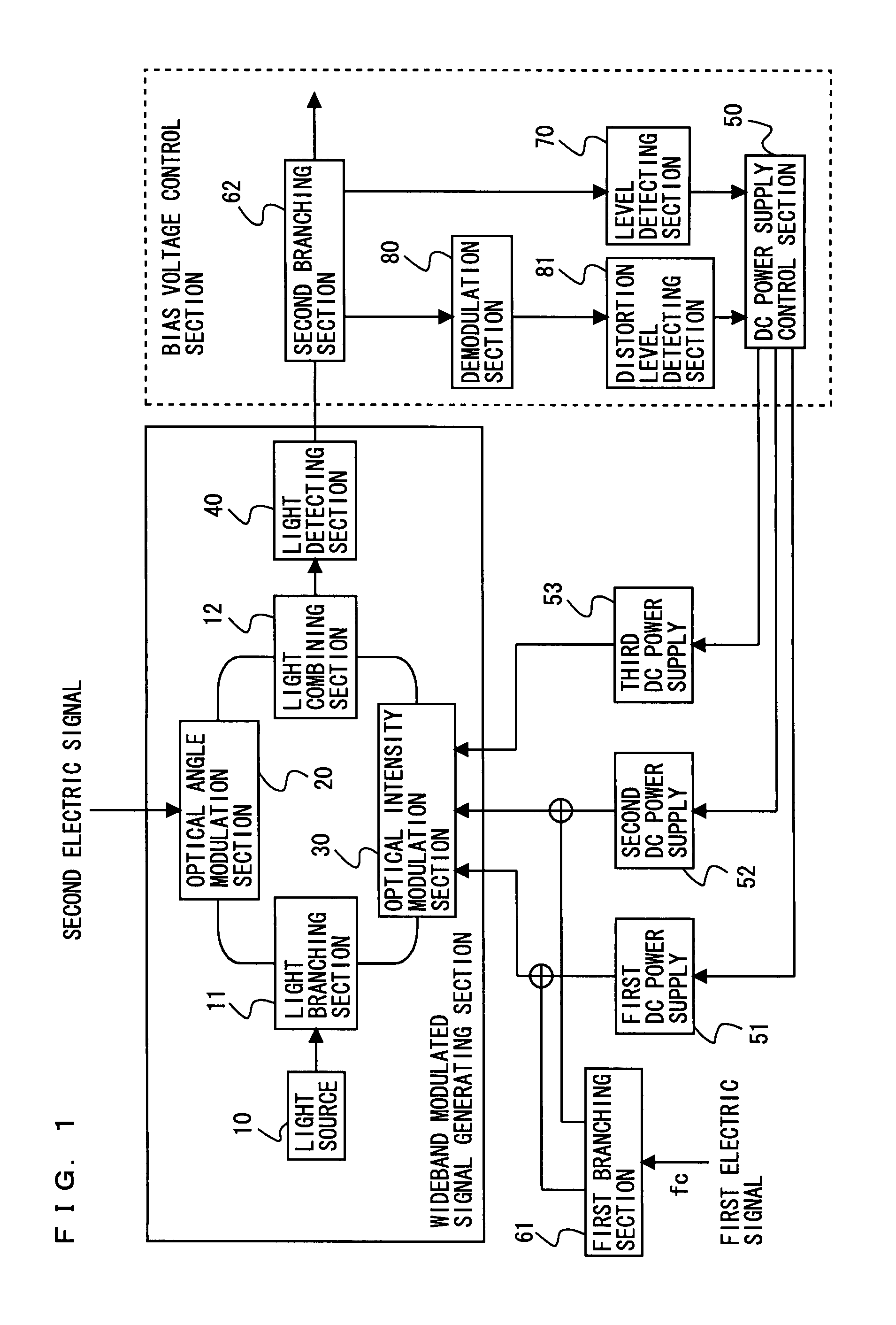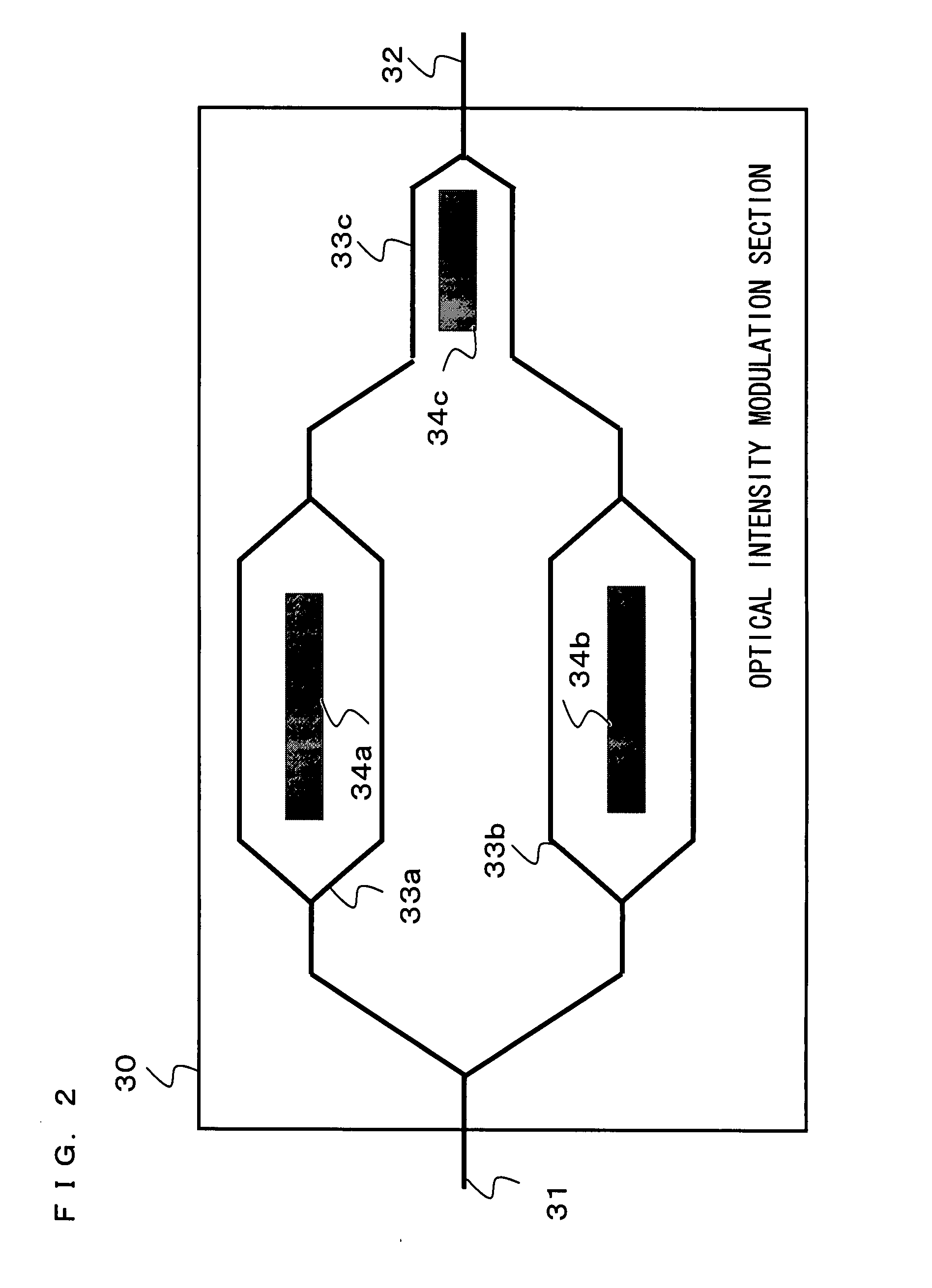Wideband modulated signal generating device
a modulated signal and wideband technology, applied in the direction of electrical equipment, optics, instruments, etc., can solve the problems of deteriorating the quality of demodulated signals, phase noise is also demodulated to become substantial white noise (intensity) noise, and the frequency of demodulated signals is increased. achieve the effect of optimally controlling bias voltage and desirable modulation characteristics
- Summary
- Abstract
- Description
- Claims
- Application Information
AI Technical Summary
Benefits of technology
Problems solved by technology
Method used
Image
Examples
first embodiment
[0094]FIG. 1 is a block diagram showing a configuration of a wideband modulated signal generating device according to a first embodiment of the present invention. Referring to FIG. 1, the wideband modulated signal generating device includes a light source 10, a light branching section 11, a light combining section 12, an optical angle modulation section (an optical phase modulation section) 20, an optical intensity modulation section 30, a light detecting section 40, a DC power supply control section 50, a first DC power supply 51, a second DC power supply 52, a third DC power supply 53, a first branching section 61, a second branching section 62, a level detecting section 70, a demodulation section 80, and a distortion level detecting section 81. The light source 10, the light branching section 11, the light combining section 12, the optical angle modulation section 20, the optical intensity modulation section 30 and the light detecting section 40 may be referred to collectively as...
second embodiment
[0117]FIG. 8 is a block diagram showing a configuration of a wideband modulated signal generating device according to a second embodiment of the present invention. Referring to FIG. 8, the wideband modulated signal generating device includes the light source 10, the light branching section 11, the light combining section 12, the optical angle modulation section 20, the optical intensity modulation section 30, the light detecting section 40, the DC power supply control section 50, the first DC power supply 51, the second DC power supply 52, the third DC power supply 53, the first branching section 61, a third branching section 63, a fourth branching section 64, the level detecting section 70, the demodulation section 80, and the distortion level detecting section 81. The light source 10, the light branching section 11, the light combining section 12, the optical angle modulation section 20, the optical intensity modulation section 30 and the light detecting section 40 may be referred...
PUM
| Property | Measurement | Unit |
|---|---|---|
| frequency | aaaaa | aaaaa |
| frequency | aaaaa | aaaaa |
| frequency | aaaaa | aaaaa |
Abstract
Description
Claims
Application Information
 Login to View More
Login to View More - Generate Ideas
- Intellectual Property
- Life Sciences
- Materials
- Tech Scout
- Unparalleled Data Quality
- Higher Quality Content
- 60% Fewer Hallucinations
Browse by: Latest US Patents, China's latest patents, Technical Efficacy Thesaurus, Application Domain, Technology Topic, Popular Technical Reports.
© 2025 PatSnap. All rights reserved.Legal|Privacy policy|Modern Slavery Act Transparency Statement|Sitemap|About US| Contact US: help@patsnap.com



